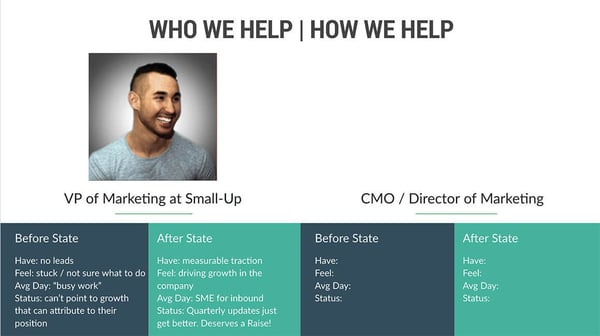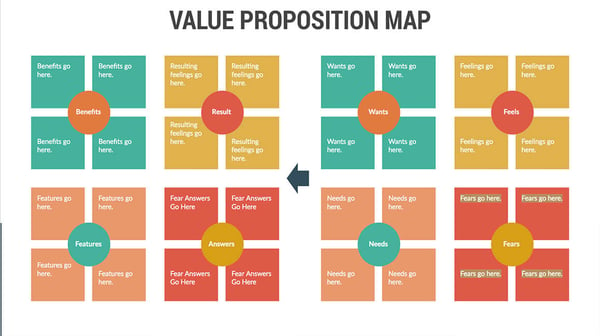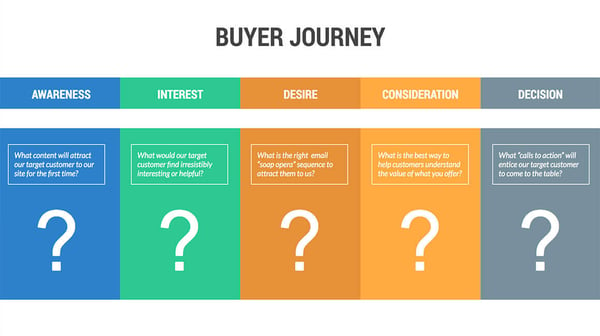It depends on who you ask.
Some gurus will have your Brand Strategy packed with slides and graphs and walls of text... we've seen some that just make you feel like going on vacation.
It's kind of like the Brand Personas documents that go into what pets they like and what their favorite colors are... It's ridiculous.
But back to the brand strategy document: I don't claim to have the perfect one. But, we have helped a bunch of brands over the years, and we've narrowed the brand strategy document down to the essential pieces.
Website Grader
Diagnose Your Growth Blockers & Unlock Your Brand’s Potential
Pinpoint the sticking points in your website and messaging holding your brand back from explosive growth. Use our proven methodology to get data-driven strategy recommendations, strengthen your content, and boost SEO.
- Identify growth roadblocks and opportunities on your website
- Data-driven recommendations for scaling
- Strengthen content and SEO with actionable insights
Thanks for submitting the form!
And you can copy it if you want.
A brand strategy document consists of several succinct, easy-to-understand, and incredibly valuable templates that your team can reference time and time again.
Related: Make Customer Acquisition Your #1 Competitive Advantage
The brand strategy document acts as a North Star and must be created in a format that marketing teams are comfortable using. We use a variety of short, one-page templates that focus each on a different aspect of the Brand Strategy.
Brand strategy is included in our Strategize the Buyer Journey step to 10x growth for our clients. Learn more about our Growth Marketing philosophy.
Why Businesses Need a Brand Strategy Template
Before we can provide you with our tried and true template for building your brand strategy, let’s first establish some key concepts. Firstly: What is a brand strategy template?
A brand strategy template is a document you can use to craft and hone the perfect identity for your business. It will include four essential elements:
- Brand Narrative
- Value Proposition Map
- Buyer Journey Map
- Brand Persona Document
Developing a Brand Strategy using a proven template is essential for your business. Your Brand Strategy will align your team on the company’s mission, direction, and goals. Additionally, adhering to a strong Brand Strategy will help you communicate consistently with customers and prospects across channels.
Let’s take a look at the four elements of our foolproof brand strategy template in a bit more detail.
1. The Brand Narrative
Every brand story has its own unique story. Business owners start their companies for numerous reasons, but usually, companies spring up to solve a specific problem or injustice. When brands identify their role in the marketplace, they can craft a compelling backstory to attract and rally customers. Companies can position their consumers as the heroes in their stories and help them achieve their goals.
An Authentic Brand Story will help gain trust and drive awareness around a cause. In the long term, building that trust and camaraderie is crucial for developing lasting relationships with customers.
We use the StoryBrand Brand Script to craft our story and apply it to our persona solution brief.

Related: Brand Identity Questionnaire: 20 Questions To Consider
2. The Value Proposition Map
Companies often lose sight of the customer by fixating their message on their solution or product. If all your messaging is focused on your brand, it’s unlikely that it will resonate with your Target Customers.
Instead, your primary focus must be to aid your customer. You have to lead the customer to your solution rather than leading with your solution.
By focusing on the customer and solving their problems - through education, expertise, resources, OR your solution - companies provide much more value to their audience in advance of the sale.
The Value Proposition Map helps you focus on the customer’s problem at hand. Adapted from the book Value Proposition Design by Alex Osterwalder, the Value Proposition Map outlines the relationship between the customer and your product or solution.

Each buyer persona can be analyzed by identifying:
- Wants: What does the customer desire? The answer shouldn’t just be your solution. What are the outcomes the customer is seeking after resolving their core problem?
- Feels: While solving a challenge, customers will feel frustrated, confused, overwhelmed, and more. Break down what these feelings are, and be specific
- Needs: What are the goals of your customer? These can include business initiatives, a perception they need to obtain, an improvement to their processes, website, or team, etc.
- Fears: Fears can prevent a customer from choosing your solution. Determine what fears could hold a customer back from working with you, such as cost, time frame, pace, etc.
Then, you can reference their wants, feelings, needs, and fears and compare them to the various benefits of your product, such as:
- Benefits: How does your solution fulfill your customer’s wants? What makes your product unique, helpful, or valuable?
- User Experience: You already know how your customers are feeling now. How will they feel after they use your product?
- Features: What are the building blocks of your solution, and how to they address the needs of your customer? How does it solve their problem, in terms of logistics?
- Answers: How can you address each of your customer’s fears?
3. The Buyer Journey Map
For every customer, the purchase process is a journey.
The buyer journey always starts with a challenge or problem to overcome. While every customer is different, many of your target customers experience the same day-to-day frustrations and obstacles. Brands can tap into those challenges and start to address the thoughts, feelings, and questions of their consumer to effectively engage with them at every touchpoint.
The buyer journey is one of the most crucial components to a brand strategy document. The Buyer Journey Template we utilize is set up using the bait/hook/reel metaphor. We use that to construct the buyer journey. That context will help you create the messaging, lead magnets, and content that will help nurture customers through the buyer journey.

We cover each stage, breaking each step down as such:
- Awareness: Covers all the questions customers are asking at the start of their journey. This content is mostly educational and aims to help them at the very beginning.
- Interest: Now that we know which questions customers are asking, we can think through even more persuasive and enticing offers for them. What’s really going to bait them?
- Desire: We need to keep delivering value at this stage, without pushing out solution too much. This is the stage where we position ourselves as a friendly volunteer and slowly reel them into our solution.
- Consideration: We’re transitioning from building trust and using that trust to lead the customer to us. This is when we show the customer what we have to offer. We create content that helps them really “get” our solution.
- Decision: At this final stage, we know the customer is thinking about purchasing our solution. What signals can we identify to show us they’re interested? At this stage, we want to lower any barrier or obstacle to purchasing.
FREE GROWTH TOOL
Assess Your Growth Performance & Set Clear Goals.
Measure your growth performance and quickly identify the cause of friction in your buyer journey.
Thanks for submitting the form!
By the end of the buyer journey exercise, we’ll have a lot of valuable context about our customer. Teams can use this document again and again to brainstorm offers and content.
Related: Make Customer Acquisition Your #1 Competitive Advantage
4. The Brand Persona Document
Who are you as a brand? What personality and energy does your brand bring to the table for your target customers?
Determining the voice and overall perception you want to present to the customer is another crucial step in the brand strategy document. There’s a few insurance brands out there we can look to for inspiration that range from being lighthearted and witty to heroic and reliable.
- GEICO: Geico Insurance is known for their fun mascot, the gecko. The brand is approachable, friendly, and easy to talk to.
- Allstate: For the past 60 years, Allstate has been known as trustworthy and dependable. In all of their messaging, they exemplify that When You’re In Their Hands, you’re taken care of.
- Progressive: Since Progressive started running ads using Dean Winters as “Mayhem”, the brand has been the hero of the insurance industry.
Even if you’re not in insurance, these three brands provide three different examples of the approach you can take with your brand persona.
In our Brand Persona Document, we help brands figure out who they are, using 49 Personality Archetypes, as well as a few brand voices to select from. This is the foundation to a strong brand, as it will dictate all of your messaging, as well as the look, feel, and tone of your website.
 Image credit: https://www.howtofascinate.com
Image credit: https://www.howtofascinate.com
Making Your Brand Strategy Document Useful
Short and sweet is best when you’re trying to make a brand strategy document that will serve your team. While concise documents help cut down unnecessary steps of a brand strategy, these shorter documents also keep teams aligned on what actually matters. This way, your team can have a clear direction in strategy, and put the brand on the way to consistency and awareness with customers.
Related: Make Customer Acquisition Your #1 Competitive Advantage
If you need some help on your strategy docs, we might be able to help out. Business owners looking to create an effective long-term strategy, should check out the growth playbook.
Click here to download a blank copy of the Brand Strategy Template